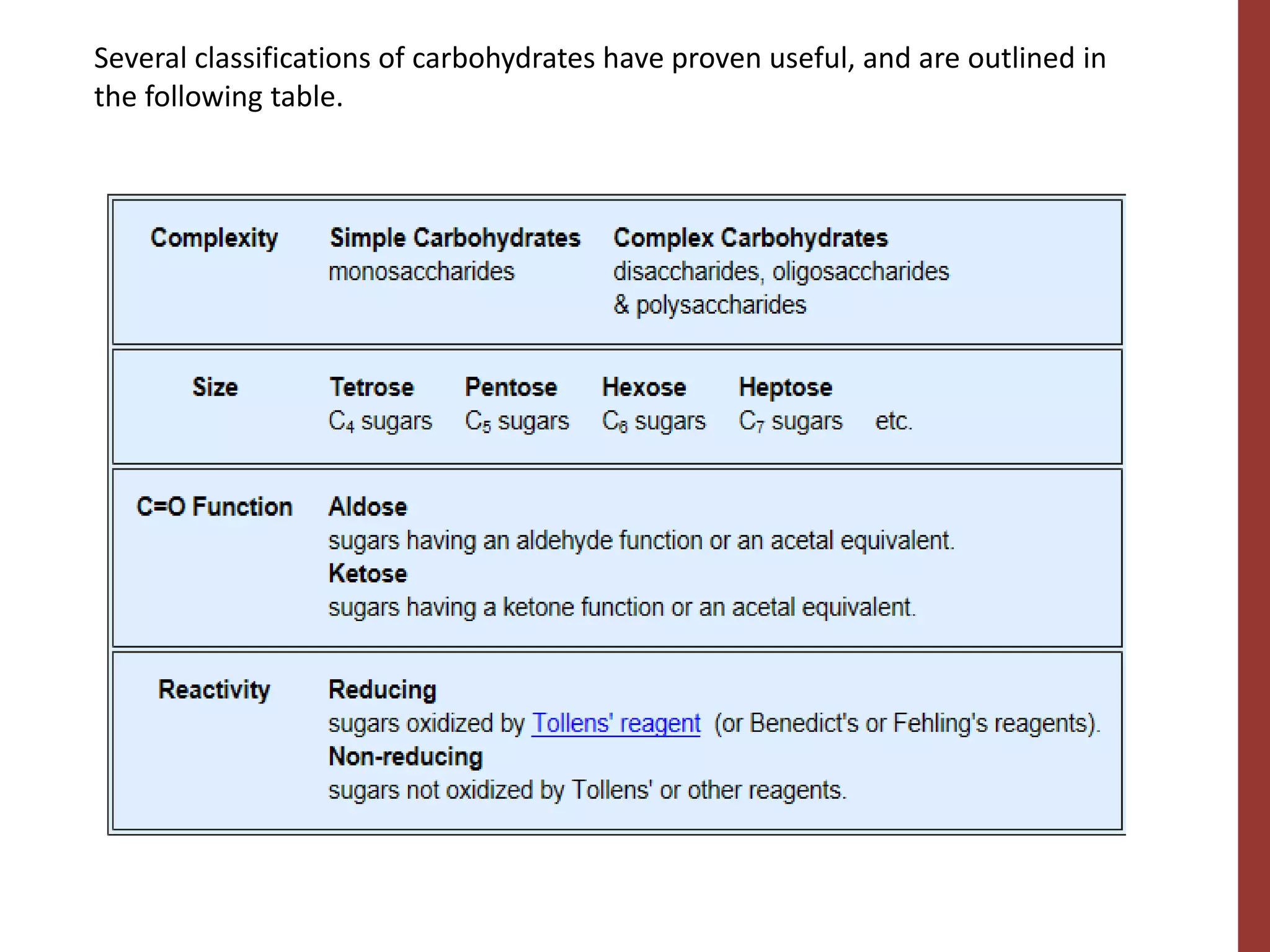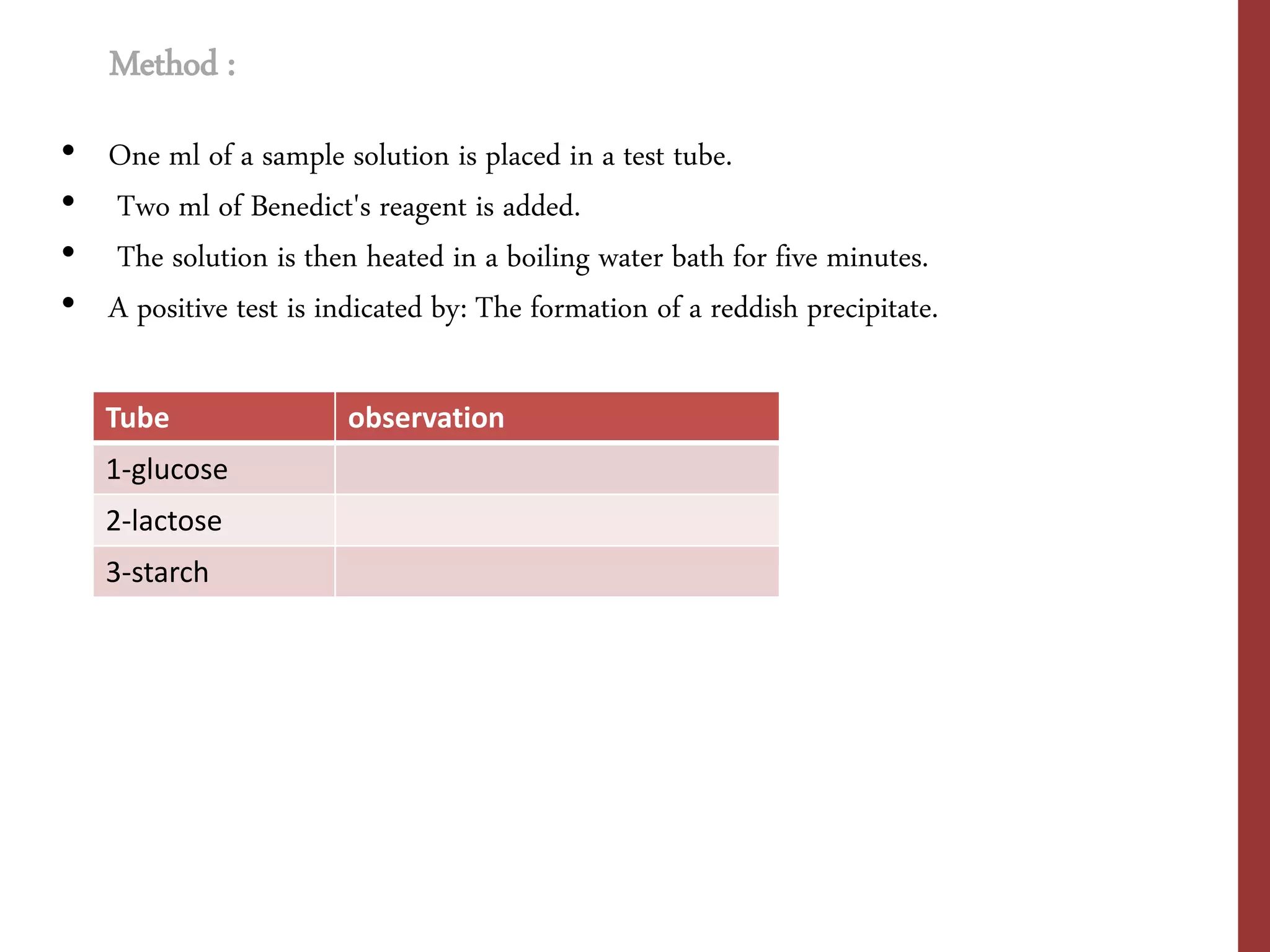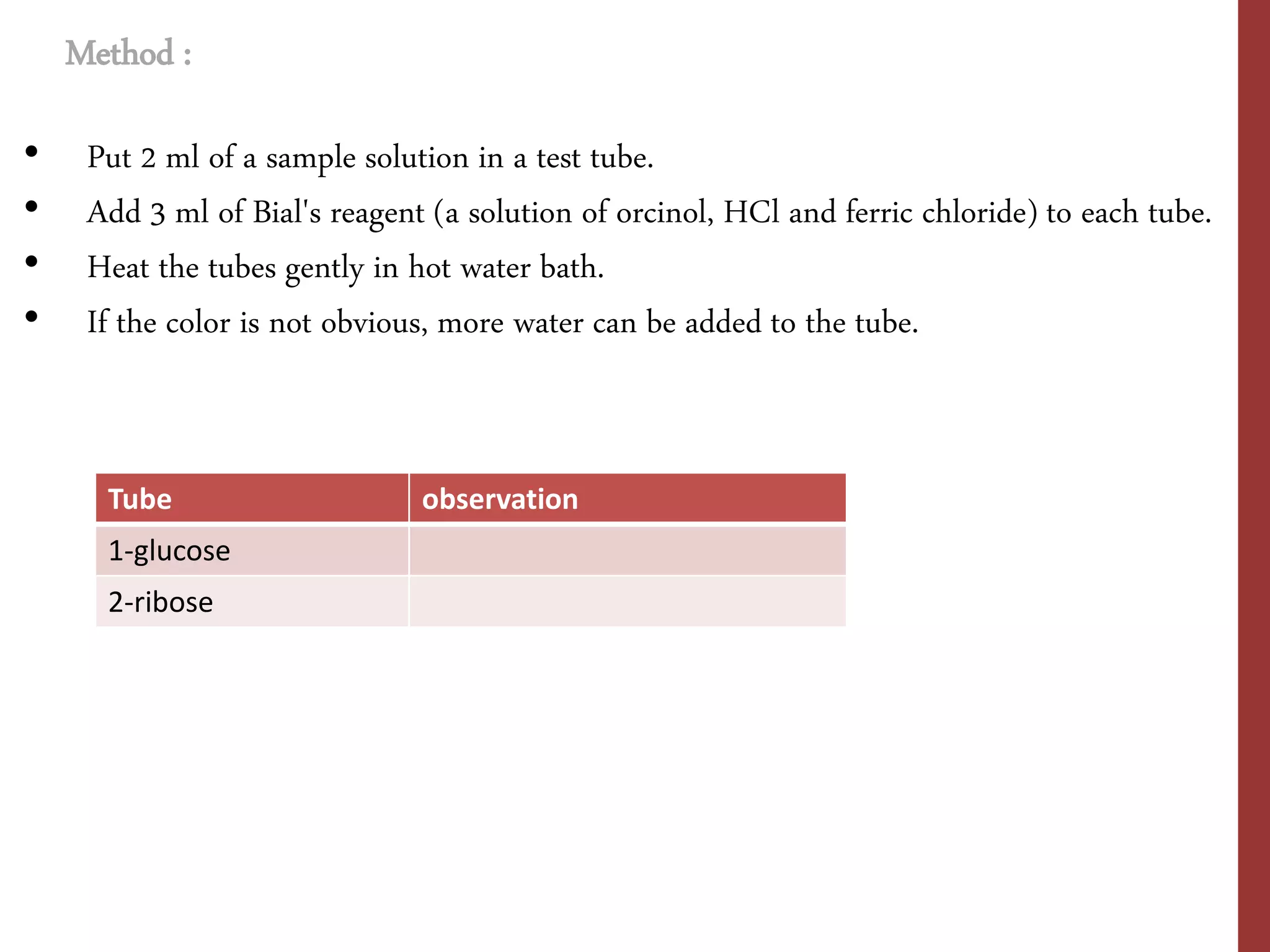Here are the answers to your questions:
1. The complex formed by the addition of concentrated sulfuric acid to sugar solution is called a furan ring. The sulfuric acid dehydrates the sugar, removing a water molecule and forming a ring structure between the carbon atoms.
2. Sucrose gives a negative Benedict's test because it is a non-reducing disaccharide. The carbonyl groups are tied up in the glycosidic bonds between the glucose and fructose molecules, so they cannot act as reducing agents.
3. Even though starch has free hemiacetal bonds, it gives a negative Benedict's test because the concentration of free reducing ends is very low due to its large size as





![Solubility of sugars [physical property]:
Monosaccharide and disaccharide can be dissolved freely in water because water is a
polar substance, while polysaccharide cannot be dissolved easily in water, because, it
has high molecular weight , which give colloidal solutions in water.](https://image.slidesharecdn.com/carbohydratei-230317172625-dfd74350/75/carbohydrate_i-pdf-6-2048.jpg)
![Chemical Properties of Carbohydrates:
1- Molisch Test: specific for carbohydrates.
2- Benedict's Test: presence of reducing sugars.
3- Barfoed's Test: test used for detecting the presence of monosaccharides.
4- Bial's Test: used to detect pentose [5C] monosacharides.
5- Seliwanoff's Test: distinguish between aldoses and ketoses.](https://image.slidesharecdn.com/carbohydratei-230317172625-dfd74350/75/carbohydrate_i-pdf-7-2048.jpg)

![α-naphthol
[Present in the reagent ]
α-naphthol
Purple ring
Purple ring
furfural
5- hydroxymethyl furfural](https://image.slidesharecdn.com/carbohydratei-230317172625-dfd74350/75/carbohydrate_i-pdf-9-2048.jpg)


![Principle :
• The copper sulfate (CuSO4) present in Benedict's solution reacts with electrons
from the aldehyde or ketone group of the reducing sugar in alkaline medium.
• Reducing sugars are oxidized by the copper ion in solution to form a carboxylic
acid and a reddish precipitate of copper (I) oxide.
reddish
precipitate
[copper oxide].
Reducing sugar carboxylic acid
lactose
sucrose
glucose](https://image.slidesharecdn.com/carbohydratei-230317172625-dfd74350/75/carbohydrate_i-pdf-12-2048.jpg)



![Objective:To distinguish between pentose monosaccharide and hexose
monosaccharide
4. Bial’s Test:
Principle: Bial’s test uses concentrated HCl as a dehydrating acid and orcinol +
traces of ferric chloride [FeCl3] as condensation reagent. The test reagent
dehydrates pentoses to form furfural. Furfural further reacts with orcinol and the
iron ion present in the test reagent to produce a bluish or green product, while
hexoses yield muddy-brown to grey condensation product.](https://image.slidesharecdn.com/carbohydratei-230317172625-dfd74350/75/carbohydrate_i-pdf-16-2048.jpg)



